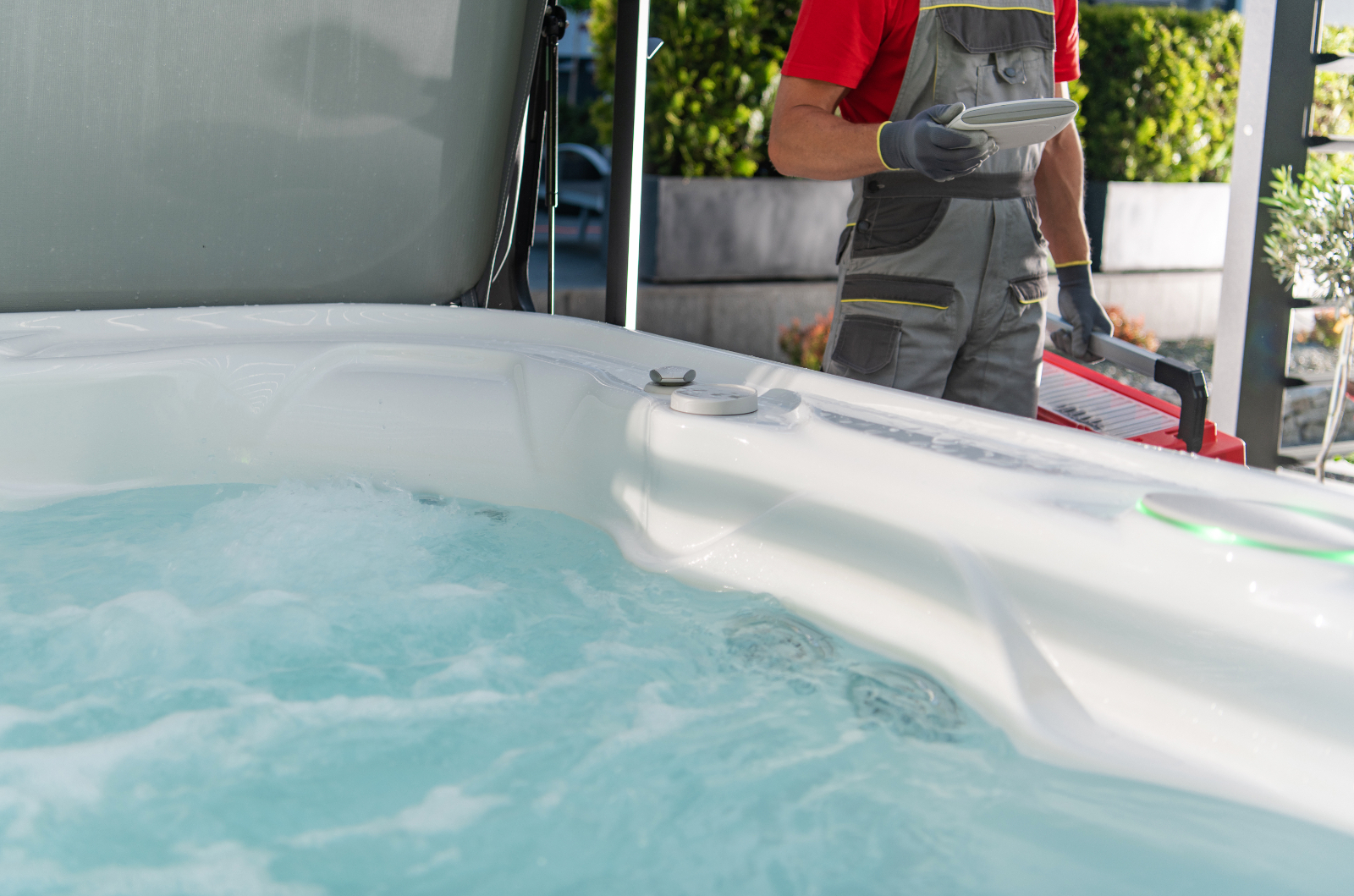This article explores why regular hot tub servicing is essential, the risks of neglecting maintenance, and how you can keep your hot tub in top condition.
The Hot Tub Engineer provides professional hot tub servicing and maintenance throughout Maidstone and Kent. Regular hot tub servicing is essential if you want to keep your spa safe, efficient, and enjoyable for years to come. Without proper care, your hot tub can quickly become a costly problem, rather than the relaxing investment you intended.
Why Do You Need To Maintain Your Hot Tub?
The best thing you can do is clean your hot tub consistently. Without proper cleaning, filters become oversaturated, losing their ability to capture debris and contaminants effectively. This leaves users soaking in murky, bacteria-filled water.
A well-maintained hot tub filter ensures water stays clear and safe. While filters can be cleaned regularly, they do not last forever. Over time, wear and tear cause fibres to break down. For peace of mind, filters should be replaced every one to two years—or sooner if you notice reduced water quality.

Is A Hot Tub Hard To Maintain?
Hot tub maintenance may seem daunting, but in reality, it is straightforward once you understand the basics of water chemistry and routine cleaning. Most modern hot tubs and swim spas include an automatic circulation system, which ensures water is filtered once or twice daily.
If yours doesn’t, it is vital to run the pump manually twice a day for 15–20 minutes to keep the water moving.
Weekly cleaning is also essential:
- Wipe down the shell and jets with white vinegar.
- Clean the scum line at the water’s edge.
- Rinse and sanitise the hot tub cover to prevent mildew.
Every three to four months, schedule a full drain and refill of the spa. This deep clean helps remove stubborn contaminants, extends the lifespan of your hot tub, and keeps your water quality regulated.
The Damage Of Not Maintaining Your Hot Tub
Neglecting hot tub servicing can lead to serious safety issues, costly repairs, and reduced energy efficiency. Poorly maintained water can encourage bacterial growth, which poses health risks such as ear, eye, and skin infections. More serious problems like Legionnaires’ disease can also occur if water quality is ignored.
In addition to health concerns, limescale buildup and untreated contaminants can damage pumps, heaters, plumbing, and pipework. Over time, this wear and tear may shorten the lifespan of your hot tub and lead to expensive repairs or full component replacement.

Hot Tub Water

Taking A Water Sample
Risk Of Infection
Without regular hot tub servicing, users risk exposure to harmful bacteria and parasites. Issues such as hot tub rash, E. coli, and Giardia are commonly linked to poorly maintained spas. Symptoms can range from mild irritation to serious illness.
Water testing and chemical balancing are crucial for preventing infections. Maintaining pH between 7.2 and 8, using sanitising chemicals, and scheduling an annual service with an authorised technician are the most effective ways to ensure your hot tub remains safe.
The Benefits of Regular Hot Tub Servicing
Regular hot tub servicing provides multiple benefits beyond just water cleanliness:
- Health Protection: Regular maintenance prevents bacteria, fungi, and parasites from thriving.
- Peace of Mind: An authorised and regulated technician can spot potential issues before they become costly repairs.
- Longevity: Keeping components such as pumps, heaters, and filters in good condition extends the lifespan of your hot tub.
- Energy Efficiency: A well-maintained hot tub runs efficiently, saving money on energy bills over time.
- Relaxation: You can enjoy the full benefits of soaking in clean, well-regulated water without worrying about risks.

How Often Should You Service Your Hot Tub?
An annual service by an authorised hot tub engineer is recommended for all hot tubs, alongside your regular cleaning routine. Depending on usage, water conditions, and environmental factors, you may need more frequent servicing.
A yearly inspection ensures that pumps, heaters, filters, and plumbing are working efficiently, and it provides the opportunity to address potential issues before they cause damage.
Signs Your Hot Tub Needs Servicing
Watch out for these common signs that your hot tub may require immediate attention:
- Cloudy or murky water despite chemical treatments.
- Unusual noises from pumps or heaters.
- Reduced jet performance or weak water flow.
- Persistent odours, even after cleaning.
- Visible cracks, leaks, or worn components.
If you notice any of these, it’s time to schedule a professional inspection.
Hot Tub Servicing and Investment Protection
A hot tub is a significant investment in your home and lifestyle. Just like a car requires regular servicing to remain roadworthy, a hot tub needs regular servicing to remain safe, efficient, and enjoyable.
By committing to regular hot tub servicing, you are not only ensuring relaxation and safety but also protecting your investment for years to come. Preventative maintenance is always more cost-effective than major repairs or replacements.
The Importance of Regular Hot Tub Servicing: Final Thoughts
Hot tubs are designed to provide comfort, health benefits, and relaxation. But without proper care, they can quickly become unsafe and costly. Regular hot tub servicing is essential for water quality, component efficiency, and overall peace of mind.
By scheduling regular maintenance, cleaning thoroughly, and arranging annual inspections, you can keep your hot tub in top condition, enjoy safe soaks, and extend the lifespan of your spa for years to come.
At The Hot Tub Engineer, I provide expert-level services for hot tubs, swim spas, and pools in and around Maidstone, Kent. I can carry out yearly servicing appointments, as well as cleaning sessions, general maintenance, installations, and more.





